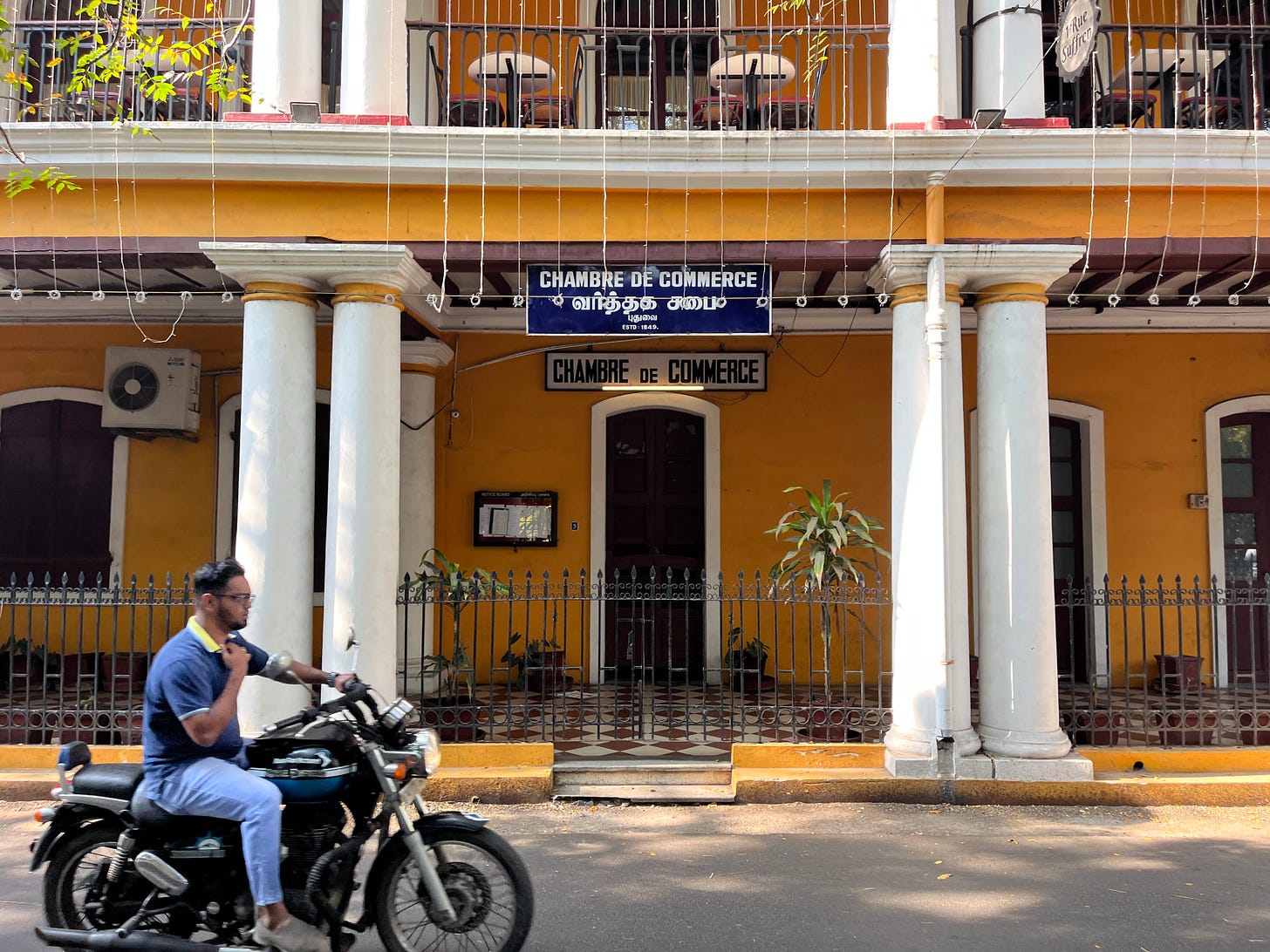Secondary cities are totally underrated
181 | Chidambaram, India | Where life happens
A friend asked why I spend time in cities. He said he hates them. Can’t stand the dust that sticks to your throat, the stuff you hack up in the shower. He detests the incessant hydraulic puff of bus brakes.
I choose to stop in secondary cities when I can because it’s where life happens. There are nearly five hundred million city-dwellers in India, and here, in cities like Thanjavur and Pondicherry, they play music, fix leather shoes, hang art, sell fish under the sun, fight with their spouse and fall back in love — all in one afternoon.
*
Cities, like an untrained percussion band, carry their own vibrations. These are often unpalatable but, even so, I want to listen. Sometimes they are calm, at other times they are manic.
For example, cycling into Pondicherry was chaos because of our (the road users') collective neglect of the Highway Code. To avoid queuing, we drove head-long into oncoming cars. None cared for the rules, nor did the policeman in his tightly pressed beige uniform and faded red French fez (this was a French colony until 1954). When we, too, got stuck, the buses broke through on pedestrian walkways — the pedestrians took the gutter.
Conversely, Thanjavur vibrates differently. There is less stress on people’s faces. Broad residential streets unrolled like a tarmac carpet, welcoming me to the city centre. Occasional fruit stands stood untouched as the evening light pooled on the roads and spilt shadows like ink. There was no congestion, not even a honk.
*
Travelling is about seeing and understanding a country, and it’s not possible to understand a place if you only go to the pretty bits. And though I appreciate temples, you can see too many — they are static, often dead somehow.
Moreover, normal people don’t live on the tourist trail. The tourist trail itself is corrupting, the incentives are all wrong. Whereas I’m hassled where tourists are expected, because the incentives pay that way, I’m welcomed everywhere else.
My ideal moment is discreetly watching a street going about its Tuesday morning life, seeing the laundry open its shutters, local mamas squeezing fruit for ripeness, old Tamil men drinking masala chai; I love seeing the sun climb over another day, one which won’t be remembered for anything in particular.
These ordinary moments get me excited.
So, too, does architecture. It seems static, yet is always evolving. It’s a footprint of the past. Pondicherry is unique because of its recent colonial past. The city is called the “French Riviera of the East”, and I walked the promenade lined with white French colonial housing all two storeys high, painted crisp white.
The road names (Rue de Bussy, Rue de Marine), and the buildings (Romain Rolland Library, the French Institute of Pondicherry at Saint Louis Street), give a sense of the blended history. It’s now a tourist destination, famous in India for its architecture, and known internationally for Auroville, the utopia I will write about in due course.
I see plenty of farmland — six to eight hours of it every day. When it’s quiet, I hear the hum of the chain spinning over my rear cassette, and I think of Tesson’s words in his book, Consolations of the Forest:
The essential thing is to live one’s life with a brave hand on the tiller, swinging between contrasting worlds. Balancing between danger and pleasure, the frigid winter and the warmth of the stove.
Contrast, for me at least, means appreciating the silent-wide wheat fields along with the cluttered madness of cities.




Love the fact you mix the rural peace and city bustle - you need both to understand daily life